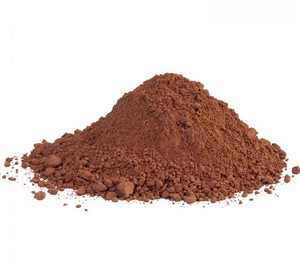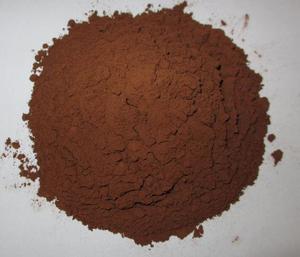
All categories
Featured selections
Trade Assurance
Buyer Central
Help Center
Get the app
Become a supplier

(1266 products available)















































Cocoa ingredients have become essential components in the food and beverage industry, serving as a cornerstone for various culinary creations. These ingredients are derived from cocoa beans, which are processed to produce different forms such as cocoa powder, cocoa butter, and cocoa liquor. Each form of chocolate bars cocoa powder offers unique properties and flavors, making them versatile for a wide range of applications. From enhancing the taste of desserts to providing texture and richness in savory dishes, cocoa ingredients are indispensable in both commercial and artisanal food production. As the demand for cocoa-based products continues to rise, understanding the different types and uses of cocoa ingredients is crucial for those involved in food manufacturing and product development.
The diversity of chocolate bars cocoa powder available in the market reflects the various processing methods applied to cocoa beans. Cocoa powder, for instance, is created by grinding roasted cocoa beans and removing the cocoa butter, resulting in a fine powder used extensively in baking and beverage industries. There are two main types of cocoa powder: natural and Dutch-processed. Natural cocoa powder is acidic and has a robust flavor, while Dutch-processed cocoa powder is treated with an alkalizing agent to neutralize its acidity, offering a milder taste. Cocoa butter, on the other hand, is the fat extracted from cocoa beans, prized for its smooth texture and stability, making it ideal for chocolate production and cosmetics. Cocoa liquor, also known as cocoa mass, is a paste made from ground cocoa nibs and serves as the foundation for chocolate products. Each variety of chocolate bars cocoa powder is tailored to meet specific culinary needs, ensuring there is a suitable option for every recipe.
chocolate bars cocoa powder are renowned for their multifaceted roles in food preparation, contributing both flavor and functionality. They are rich in antioxidants and flavonoids, which are beneficial for health, adding nutritional value to food products. Cocoa powder is often used to impart a deep, chocolatey flavor to baked goods, beverages, and desserts, while its low-fat content makes it a healthier alternative to other chocolate products. Cocoa butter is celebrated for its ability to create a smooth, melt-in-the-mouth texture in chocolates and confections, as well as its moisturizing properties in skincare products. Cocoa liquor, with its concentrated cocoa solids and fat, is essential in crafting high-quality chocolates, providing the base for different chocolate variations. The adaptability of chocolate bars cocoa powder allows them to enhance both the taste and texture of a wide array of food items, making them a staple in any kitchen.
The production of chocolate bars cocoa powder involves several key ingredients and processes, each contributing to the final product's quality and characteristics. Cocoa beans are the primary ingredient, selected for their flavor profiles and sourced from various regions known for their unique cocoa varieties. The beans undergo fermentation and drying to develop their flavor, followed by roasting to enhance their aroma. During processing, additional elements such as alkali may be introduced to produce Dutch-processed cocoa powder, affecting the color and taste. Sugar, milk, and emulsifiers are often added to cocoa liquor to produce chocolate, balancing sweetness and texture. Understanding the composition and processing of chocolate bars cocoa powder is essential for producing consistent and high-quality cocoa products, ensuring that they meet the desired standards for taste and application.
Utilizing chocolate bars cocoa powder effectively requires knowledge of their properties and the intended culinary application. For baking, cocoa powder can be used to flavor cakes, cookies, and brownies, with the choice between natural and Dutch-processed affecting the recipe's leavening and flavor profile. Cocoa butter is often melted and tempered for use in chocolate making, providing a glossy finish and smooth texture. It can also be incorporated into savory dishes to add richness and depth. Cocoa liquor is a versatile base for creating various chocolate types, from dark to milk chocolate, depending on the additional ingredients used. When using chocolate bars cocoa powder, it is important to consider their compatibility with other ingredients, as well as the desired outcome in terms of flavor and texture. Proper storage is also crucial, as cocoa products can absorb odors and moisture, affecting their quality. By understanding how to best use cocoa ingredients, they can be leveraged to create exceptional culinary experiences.
When selecting chocolate bars cocoa powder for culinary use, several factors should be considered to ensure optimal results. The intended application plays a critical role in determining the type of cocoa ingredient needed. For baking, cocoa powder is often preferred, with the choice between natural and Dutch-processed affecting the flavor and texture of the final product. Cocoa butter is essential for chocolate making, offering a smooth texture and glossy finish. It's important to assess the flavor profile, as different regions produce cocoa beans with distinct characteristics. Additionally, sustainability and ethical sourcing are becoming increasingly important, so opting for chocolate bars cocoa powder from certified sources can enhance both the quality and ethical footprint of your culinary creations.
The quality of chocolate bars cocoa powder is another crucial aspect to consider. High-quality cocoa ingredients typically have a rich aroma and flavor, which can significantly impact the taste of food products. Look for ingredients with minimal additives and preservatives, as these can alter the natural taste and texture. The freshness of cocoa ingredients is vital; they should be stored properly to prevent spoilage and maintain their quality. Packaging that ensures minimal exposure to air and moisture can help preserve the integrity of chocolate bars cocoa powder, ensuring they remain a valuable component in your culinary endeavors.
Natural cocoa powder is made by grinding roasted cocoa beans and has an acidic nature, offering a robust, rich flavor. Dutch-processed cocoa powder, on the other hand, is treated with an alkalizing agent to neutralize acidity, resulting in a milder taste. The choice between these types of chocolate bars cocoa powder can affect the flavor and chemical reactions in recipes, especially those involving baking soda or baking powder.
Yes, cocoa butter can be used in savory dishes to add richness and depth. Its smooth texture and mild flavor make it suitable for various culinary applications beyond confectionery. When incorporating chocolate bars cocoa powder into savory recipes, it's essential to balance flavors and ensure compatibility with other ingredients.
Cocoa liquor, also known as cocoa mass, is a paste made from ground cocoa nibs and contains both cocoa solids and cocoa fat. Cocoa powder, on the other hand, is derived from cocoa liquor with the cocoa butter removed, resulting in a dry powder. While both chocolate bars cocoa powder are used for flavoring, cocoa liquor serves as the base for chocolate production.
Sourcing chocolate bars cocoa powder ethically ensures that the cocoa beans are grown and harvested under fair labor practices, contributing to sustainable agriculture and supporting local communities. Ethical sourcing also promotes environmental conservation and enhances the quality of the cocoa ingredients by adhering to rigorous standards.
Cocoa ingredients should be stored in a cool, dry place away from direct sunlight to preserve their quality. Proper storage prevents the absorption of odors and moisture, which can affect the taste and texture. Airtight containers are recommended to maintain the freshness of chocolate bars cocoa powder and extend their shelf life.